originally posted at https://canmom.tumblr.com/post/636488...
Another multiple-of-ten milestone this week, and for sure, we have something suitably bombastic to go with it! That something is Tengen Toppa Gurren Lagann (the title could be translated as Heaven-Piercing Gurren Lagann but… for some reason rarely is!)

Yours is the drill that will pierce the heavens! Kick reason to the curb! Don’t believe in yourself, believe in me who believes in you! That’s the Team Gurren way! etc. etc. - It’s the meme anime, sure, but it’s a pretty incredible production: one of the last big works of Studio Gainax before the most of the big names departed the studio.
Gurren Lagann was the first time Hiroyuki Imaishi, nowadays known as one of the founders of Studio Trigger, directed a TV anime (following the completely batshit film Dead Leaves with Production IG). If you’ve seen his work at Trigger (e.g. when we watched Promare), you’ll recognise the style of TTGL immediately: the manner of stylisation, the lighting, colour schemes… it’s all there. But TTGL was the initial ‘statement’, and what a statement.
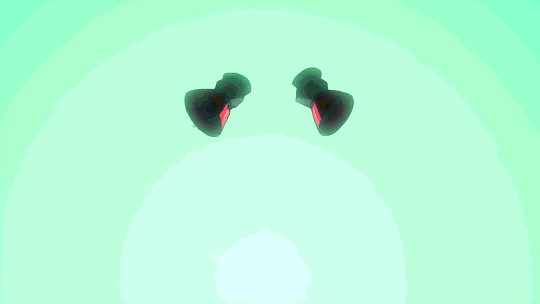
Like… justu about all of Imaishi’s work, TTGL is a development of the ‘Kanada school’ style of animation pioneered by Yoshinori ‘Really If You’re Going To Remember One Animator’s Name This Would Be a Pretty Good Choice’ Kanada. Kanada was one of the first Japanese animators to have a personal reputation as a ‘charisma animator’, interviewed in magazines and specifically followed by fans across different productions, and as such he’s one of the most influential animators in the whole medium.
So what makes ‘Kanada school’? There’s a few elements to it, such as: an emphasis on striking extreme, dramatic poses, often accentuated by exaggerated perspective shots and background changes; highly detailed specular lighting; the use of impact frames to accentuate a strike. He was extraordinarily prolific throughout the 70s, and you can see a nice compilation of some his work here:
One of his best-known motifs is the ‘Kanada dragon’, in which a swirling fire turns into a long, twisting dragon shape and like, flies around a bit. This tends to look absolutely gorgeous, and has been homaged by many, many animators since.
Kanada’s style was spread through many animators who either worked with him or were simply inspired, who became known as the Kanada School. You can read a brief history of some of the names involved here. Or, if you’ll permit me another video:
It might not be much exaggeration to say that Kanada’s style pretty much defined action anime ever since. Certainly if you watch a parody of anime you’ll probably see some Kanada elements. But, of the various animators to carry on Kanada’s legacy, Imaishi is probably the best known. He made some adjustments, simplifying Kanada’s complex shading a bit while pushing the perspective and timing even harder.
Gurren Lagann can be read as a development of the themes of Neon Genesis Evangelion (on which Imaishi worked), as well as a chance for Gainax to train a new generation of animators. Like NGE, it touches on depression, the extreme discomfort of adolescence, and grief. Unlike NGE, which is almost unrelentingly bleak and can’t see much way out of its problems, Gurren Lagann takes a much more upbeat view.
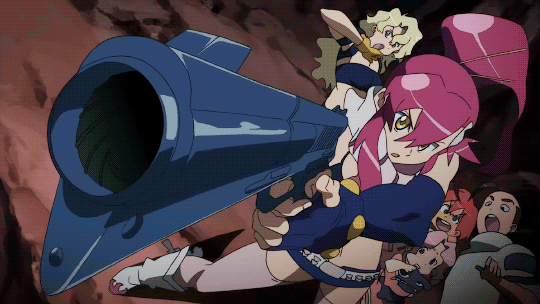
Gurren Lagann takes place in a post-apocalyptic world, overrun by the forces of the Spiral King, in which what little remains of humanity is forced to live underground with the surface ruled by the King’s ‘beastmen’. Well, that’s where it starts, anyway. The plot takes a number of dramatic swerves, following an exhilarating spiral of escalation to (I guess!) structurally reflect the show’s main conceit: ‘spiral energy’.
Described as the power behind evolution (kinda silly but bear with me), Gurren Lagann’s ‘spiral energy’ is kind of a cosmic force which rewards confidence and determination with… well, practically, with bigger transforming robots, but narratively, this is a world in which there is no greater mistake than accepting ‘necessary evils’ instead of going for the stupidest, most impossible route of demanding it all and carrying it through anyway.
We can read ‘spiral energy’ as exponential growth, and as much as I tend to see that as a potentially very horrifying thing, Gurren Lagann makes a pretty compelling emotional case for it.
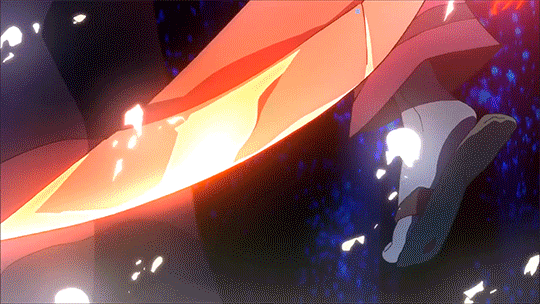
Obviously its values are intimately tied in with notions of masculinity, and there is a lot to be said about how Gurren Lagann approaches gender, more than I am probably capable of treating in the time I have to write this post. (In that regard, it’s fascinating to read it alongside Imaishi’s later work Kill la Kill). It’s about a certain implicitly masculine ideal, but to be clear it’s also not exactly just about how great a guy like Kamina would be; there’s a reason Simon is the main character. And yes, it would easy to be put off by Gurren Lagann’s attitude that depression can be cured by a punch in the face and a suitably bravado-laden pep talk, but it manages to carry it off with the energy of editing and style: it makes us want to believe in Kamina’s rhetoric just as much as Simon. Or at least it works very very hard to.
But hold on, Bryn; who are these names you’re dropping? Simon is the protagonist of Gurren Lagann - he is young, lacking in confidence, shy but uh… good at drilling holes. Kamina, meanwhile, is the show’s most famous character: an impossibly cool, unflappable guy who takes Simon under his wing and never stops encouraging him, as they escape their home onto the surface. Kamina is clearly the leader of the group, reckless but charming enough to get away with it. They’re joined by Yoko, who runs around in almost nothing while carrying an enormous sniper rifle, which is a big mood honestly.
To briefly go out on a tangent - I do feel like Yoko is not simply Hot Girl #N+1, and is allowed subjectivity; she’s unquestionably a super horny character design but at its best, it’s a version of the fantasy where she’s into it and doing it deliberately, in a setting where broadly speaking it’s just like, young ppl going around having sexualities, so that basically doesn’t bother me [not that it’s not handled very awkwardly in places, especially the hot springs episode, which I am hoping they will mostly cut from the movies]. The camera is equally interested in sexualising Kamina, right? There’s still plenty of Gender to muck things up in how it approaches the two characters (both are presented as cool, but we get more “Kamina is confident and powerful” shot framing on the one hand and more “Yoko has nice boobs” shot framing on the other). Overall… I don’t like analysis that is just, ‘sexuality bad’, and I think there’s good reason for it to be part of this show given its themes. However, Yoko does get increasingly sidelined as the cast expands, which sucks a lot!
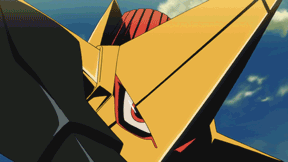
And oh boy does the cast expand a lot. The earlier arcs of the show consist of the gang building a rebel army to take on the Beastmen, characters who contrast in various ways to the main trio. The benefit of this very colourful gang is that it keeps up the show’s manic energy in every scene, from minor characters like the guy who presses the missiles button to semi-deuteragonist Viral; the drawback is that it means most characters don’t have time for a huge amount of character development. I am going to be curious how well they can handle that in four hours of movie instead of a full 26-episode series!
In any case, Gurren Lagann deserves recognition mostly for how it tells its story. The editing, the visuals, the kickass soundtrack… it all comes together to achieve the breakneck pace that Imaishi/Trigger are known for, and most importantly, creates a feeling that reflects the spirit of these characters. It’s kind of proudly stupid, but gorgeously animated for that; the imagery is up to the task of escalating from ‘fighting a small robot in a hole’ to ‘throwing galaxies in a pocket dimension to determine the fate of the universe’. It may not exactly be challenging (its politics are like… vaguely anti-authority but not particularly deep lmao) but it is extraordinarily fun.
If you’d like to read more about the production side of Gurren Lagann, there’s some interesting interviews translated on the dubiously named website fullfrontal.moe (that one’s about the rather dubious hot springs episode, but it has links to the previous five translations).
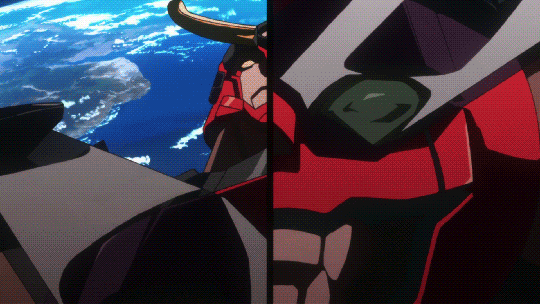
So! Tonight we’re going to watch the theatrical version of Gurren Lagann, consisting of two films, which condense the original series with some new animation to give it that extra theatrical swish.
Alongside the films, we’ll be watching the Parallel Works, which are a series of short music videos made to parts of the soundtrack by various members of Gainax’s team. The highlight is absolutely that of Yoh Yoshinari, one of Gainax’s best animators, who portrays the backstory of the Spiral King with incredible style. (I believe some of his work on this short actually made it into the film proper.) The others remix the characters into a variety of settings, some working much better than others.
And… depending on time constraints, I may also show some of Imaishi’s other work - namely his early film Dead Leaves, and an episode or two of his last work at Gainax, Panty and Stocking with Garterbelt. We’ll see.
Animation Night #30 will be at 7pm UK time at twitch.tv/canmom. Look forward to seeing you there! ^^
Comments